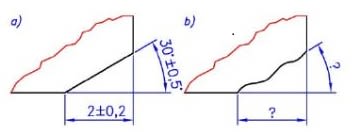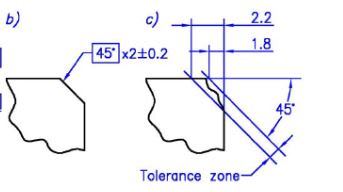USB Memory
Mechanical
- May 28, 2020
- 44
Hi all
I'm puzzled about to be an unambiguous specification of dimension and angle.
How do you all draw a chamfers in your company or yourself?
I picked some sample pictures as followed.
First one is ambiguous and second one is unambiguous sample.


Thanks
I'm puzzled about to be an unambiguous specification of dimension and angle.
How do you all draw a chamfers in your company or yourself?
I picked some sample pictures as followed.
First one is ambiguous and second one is unambiguous sample.


Thanks
